| 1 | Egyptian cobra |
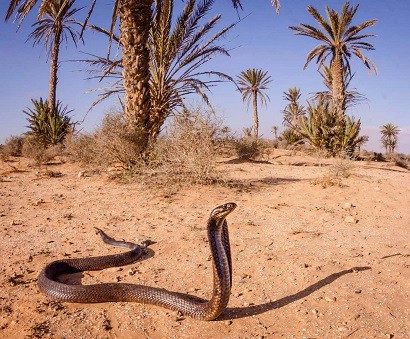
One of mankind’s original serpent nemeses, causing terror for thousands of years. Our fate has been intertwined with this cobra since the earliest foundations of ancient Egypt, a time when a handful of woolly mammoths still clung on in Siberia. Egyptian cobras are fast, agile, and regularly reach 2 metres. Their venom is easily capable of killing due to its sheer variety: neurotoxins, liver-attacking toxins and bradykinin-potentiating peptides which decrease the heart rate.
The venom is certainly survivable with antivenom, but dependent on luck. Egyptian cobras mainly live in dry areas, like parched savannahs, rocky plains and semi-deserts. You could spot an Egyptian cobra guarding a rocky canyon and be forced to find another route. Egyptian cobras also appear in villages and small towns, invading people’s houses.
While its easy to spot Naja haje slithering over a parched open plain, it’s trickier in an urban environment. You may have to carry a mirror to check round every corner. Luckily, if you can see the cobra’s reflection, they probably can’t see you, as their eyesight is above average for a snake, but still not great. The Egyptian cobra is also a figure in superstitious folklore. The day after Howard Carter and his team cracked open Tutankhamun’s tomb in 1924, his pet canary was swallowed after a cobra slithered into his lodgings.
| 2 | South American bushmaster |
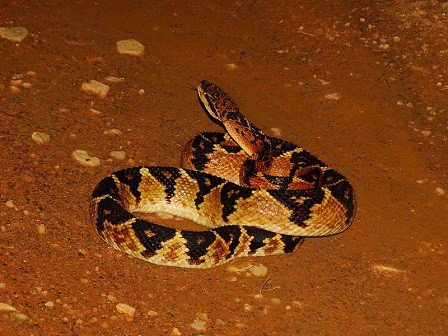
The longest venomous snake in the western hemisphere. South American bushmasters live east of the Andes and occupy a huge chunk of humid Brazil. Their venom contains a diverse array of toxins. Early symptoms include nausea and sweating, followed by hypotension, laboured breathing and faded consciousness. 1.5% of South American bushmaster bites are fatal, and they cause 4.5-7.5% of snakebites in regions where they live. In places where they really rule, it could be as high as 35%.
The raw venom of Lachesis muta is nothing exceptional. The LD50 toxicity rating is 1.6-6.2mg, versus 0.2mg for an eastern coral snake. However, South American bushmasters use their jumbo size to store, and then unleash, an absolute flood of venom. Venom yields per bite range from 200-500mg.
The redeeming factor is that South American bushmasters are relatively non-aggressive. Despite measuring 3 metres, they’re somewhat unaware of the power they possess, and will flee into the bushes making a low whistling sound, a rare sound for a snake.
| 3 | Asp viper |
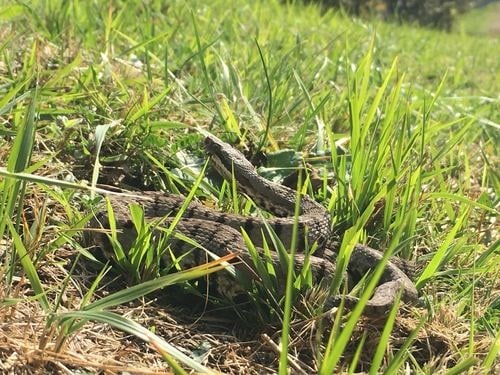
France’s main venomous snake. This is a relatively calm snake, which lives in hedges and knee high vegetation on the edges of grassy meadows, gliding silently through the undergrowth, hoping that no-one bothers them. Nevertheless, they still bite people’s feet occasionally, or curious nature lovers who pick them up.
Asp vipers measure 40-85cm, and roughly 4% of untreated bites are fatal. Its venom varies by region; those near Nice are neurotoxic, while elsewhere they target the internal organs. Kidney failure is the main cause of death.
Asp vipers bites have several grades of severity. Grade 1 includes swelling and painful blistering, while grade 2 progresses to systemic symptoms like weakness, abdominal pain, and vomiting. Grade 3 is where death is possible, and lung lesions and heavy bleeding are other advanced symptoms. They may live in a temperate western country, but don’t underestimate the asp viper. In 2014, a man aged 45 died within 5 minutes after being bitten on the thigh. A 69 year old woman perished in 1996, again after a bite on the thigh.
| 4 | Jararacussu |
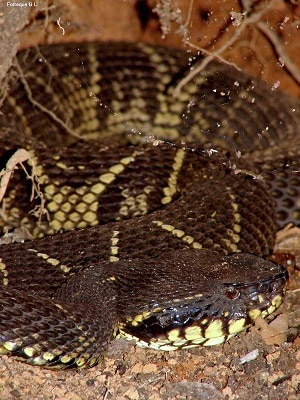
A 2 metre serpent of eastern Brazil. Jararacussu venom is light on the lungs, but heavy on the kidneys; renal failure is the main cause of death. From 1902 to 1946, jararacussus caused 9.95% of recorded snakebites in Brazil. Locally, they cause severe swelling and necrosis. Initially, this causes blood vessels to burst and assaults internal organs. Jararacussus avoid open grassland, appearing mostly in closed canopy forests with a dense undergrowth. Jararacussus live in the Atlantic forests of eastern Brazil rather than the Amazon rainforest.
Unlike the deadliest snakes, jararacussus have very few neurotoxins. The reason for their deadliness is the huge quantity of venom they inject. The average was calculated at 247mg per bite, roughly 50 times an eastern coral snake’s. The most brutish jararacussus, with their eyes glaring at you from tangled thorns, can inject 1000mg. This means that 500-600mg is fairly normal.
Per milligram, the venom isn’t close to the pinnacle of toxicity, but so much flows through your body that its effects become irresistible. Luckily, antivenom is easily available. Brazil’s main solution, Brazilian polyvalent antivenom, consists of 12.5% antibodies generated against jararacussu venom injected into horses. 50% is their close relative the jararaca, whose toxins have a large overlap.
| 5 | Mojave rattlesnake |
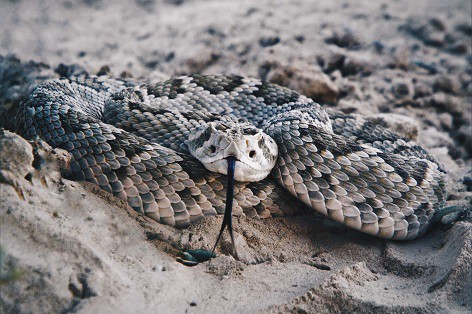
The Mojave rattlesnake is more than capable of sending you to the afterlife, but for different reasons. The jararacussu pumps in a vast quantity of haemotoxic venom, but Mojave rattlesnakes produce a smaller quantity of far deadlier neurotoxic venom.
Mojave rattlesnakes live in their namesake desert, with an empire covering Nevada and western Arizona. They measure 100cm, and aren’t massively aggressive, banging their segmented rattle scales together but giving you plenty of time to back off. However, Mojave rattlesnakes are one of the few members to be predominantly neurotoxic, along with tiger rattlesnakes. The dominant toxin is even named Mojavetoxin, and this causes gradually weakening muscles, drooping eyelids, and possibly blurred vision. Death, if it comes, arrives via respiratory paralysis. The most recent death happened in 2007, to a 63 year old woman taking a walk in Paulden, Arizona.
It turned out that the ancestor to modern rattlesnakes was a brutal machine, with 7 identified toxin genes, encoding neurotoxins, haemotoxins, cytotoxins, etc. This lived 12-14 million years ago, and after modern species diverged, several genes were deleted in various combinations. Timber rattlesnakes and diamondbacks lost the neurotoxin gene, while Mojave rattlesnakes lost the myotoxin gene, but kept the neurotoxin gene.
| 6 | Pyramid saw-scaled viper |
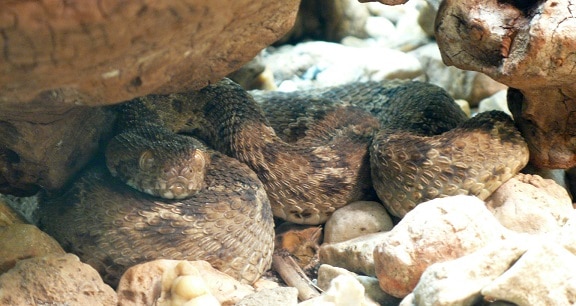
One of the most dangerous snakes in northeast Africa. Pyramid saw-scaled vipers (Echis pyramidum) stalk the dry canyons of Ethiopia, Kenya and Egypt. This is a relative of India’s 2nd or 3rd deadliest snake, and barely any milder.
Pyramid saw-scaled vipers contain few neurotoxins, which cause paralysis and laboured breathing. But they contain dozens of potent cytotoxins and haemotoxins, which few mortal men could withstand, without a vial of antivenom always carried in your coat pocket, a backup that 18th century goat herders couldn’t have possibly imagined.
A milder symptom is heavy sweating, followed by nausea and vomiting. Plummeting blood pressure reveals that advanced symptoms have arrived, and kidney failure is the usual cause of death. The pyramid markings aren’t that distinct and this species is notorious for people stepping on them. They’re silent until you approach and they produce their signature noise: a rasping sound as they scrape their “saw” scales together, by slithering on the spot. Luckily, there’s a way to escape: just get to the nearest grassy savannah. Echis pyramidum is optimised for sand and rock, where they seem to effortlessly glide forward. On other substrates they’re clumsy and halting. Hence, this fatal snake is rarely found in forests or even woodland.
| 7 | Nose-horned viper |
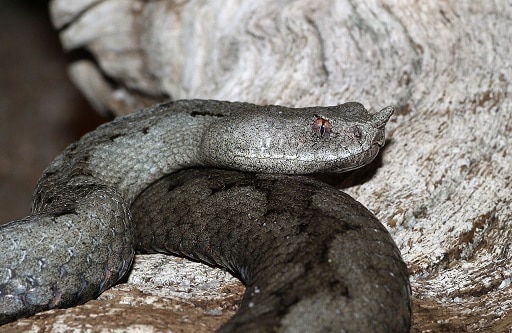
One of the only snakes in Europe capable of killing. The nose-horned viper has a mean expression and a venom to match. They’re found from Italy to Greece, and live mainly in rocky areas, including by handholds a climber might place his gloved fingers.
Nose-horned vipers contain a mixture of many toxin groups: haemotoxins, neurotoxins and cytotoxins. Deaths are confirmed, including a Croatian solider who leant against a stone wall during an army training exercise in 1993, and was bitten on the armpit. Vipera ammodytes venom tears through the mammals and lizards it preys on, and can kill a human withinin a few days.
Luckily, Vipera ammodytes is easily recognisable via its signature horn. Some are angled forwards, some bend sharply upwards, while most are inbetween. Antivenom is stocked in every Greek hospital as well. Show the nose-horned viper respect, and give it no reason to unleash its dark serpent powers on you. There’s also a snake island infested with nose-horned vipers; Golem Grad in Macedonia. The snakes here are a miniature version, smaller than their mainland counterparts, in a case of insular dwarfism. But they’re still capable of killing.
| 8 | Beaked sea snake |
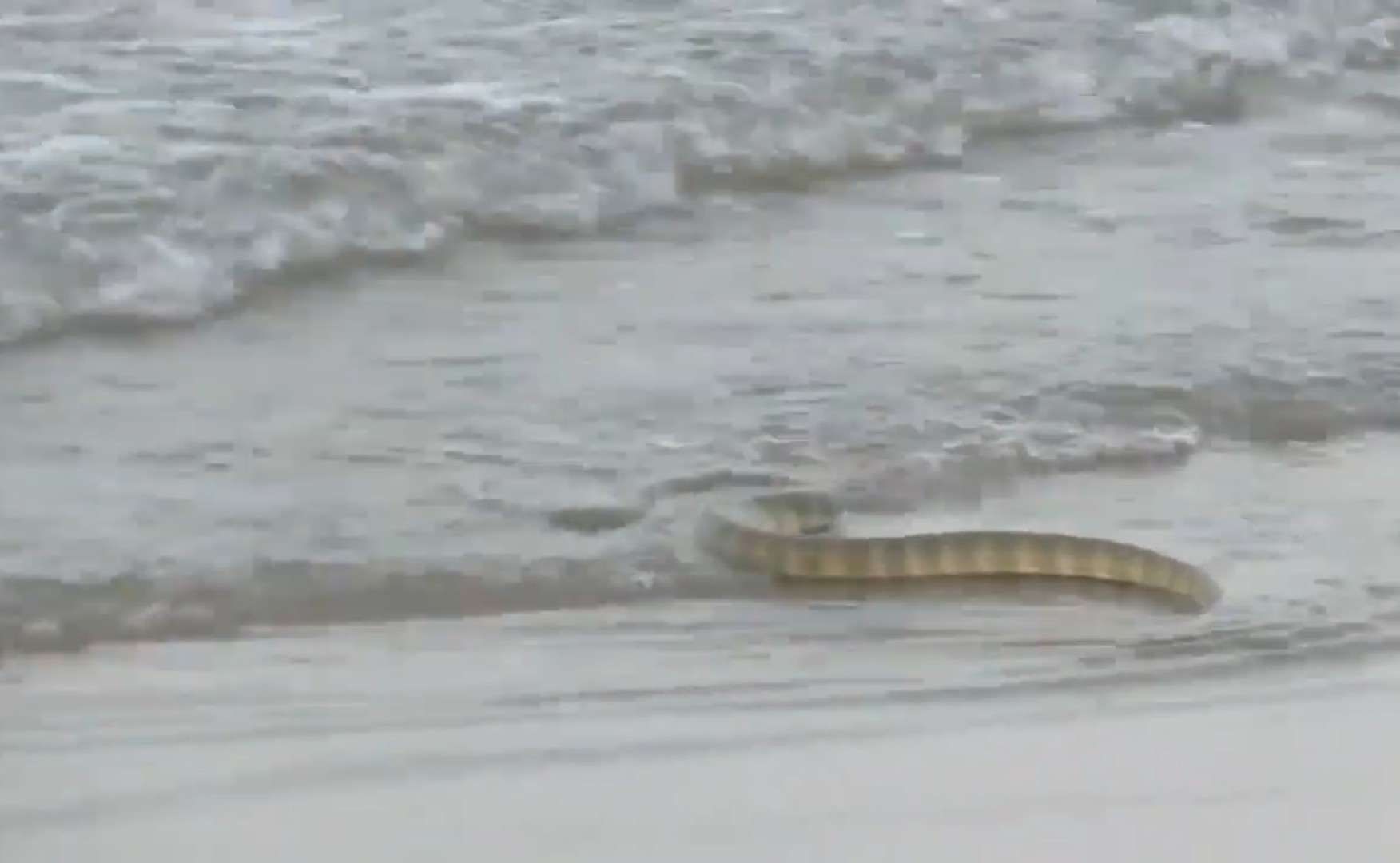
The sea snake family is in possession of a power they’re barely aware they have. The elegant sea snake and cousins have extremely neurotoxic venom, and could easily paralyse beachgoers if they felt like it. Instead, they swim serenely past, and reserve their lethality for disabling fast-moving fish. But there’s an exception to this calmness: the beaked sea snake (Hydrophis schistosus).
This species lives off the eastern coast of India, and is the most determinedly aggressive sea snake of all. H. schistosus measures 90-110cm and often lives on coastlines bustling with activity. They can be found near docks, yachts, and miniature fishing boats threading narrowly past each other. They can also be found miles offshore.
Most beaked sea snake victims are fishermen, and their plain colours help them to blend with murky waters, gliding smoothly toward their target. Beaked sea snakes cause 90% of all sea snake deaths, and 1.5mg of their venom can be fatal. As ever, their venom causes gradual paralysis, with muscles that continually weaken despite all efforts to flex them. Be careful on the east and west Indian coastlines, where they’re most abundant.
| 9 | Rinkhals |
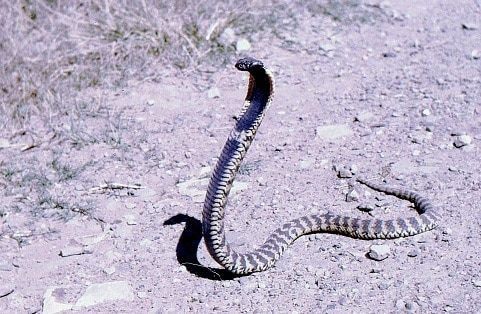
The closest relative of the cobra family. The African rinkhals bears many similarities, like a spreading hood and thin, agile nature, but are the sole member of the Hemachatus family. The rinkhals measures 100cm, and lives in southern realms like South Africa and Lesotho. Its venom is actually much milder than most cobras. A study found that 53.5% of its venom were cytotoxins, which cause blistering and painful swelling, but rarely kill. However, a 2016 report detailed a man who succumbed after being bitten twice. The rinkhals is also capable of spitting venom, unlike the cape cobra they overlap with.
Due to their love of of grassland, and black colours, rinkhals stand out clearly, but they also move through bushy vegetation. Rinkhals like open spaces rather than forests. They climb trees occasionally, but they’re not a snake which will land on your head, so that’s one saving grace.
Rinkhals are fast and aggressive, but still have no desire to get into a confrontation which could easily be costly for them. They really do fear you just as much as you fear them (well, maybe slightly less). The best solution is preventative, watching your step in the first place. If you turn a bend in the trail and are greeted by a wall of hissing, then don’t try to pin or subdue the rinkhals. Back off slowly and calmly instead.
| 10 | Texas coral snake |
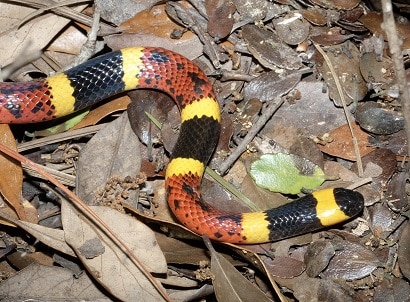
A separate species to the eastern coral snake of Florida. The two have no overlap in their territory, as Texas coral snakes begin in northern Texas and plunge deep into Mexico, almost reaching Mexico city. This species spends its days calmly exploring dry tropical forests and woodlands, finding new nooks and crannies, and grabbing fellow snakes to eat.
Behind a mild demeanour lies a complex recipe of neurotoxins which could freeze your muscles and disable your lungs. Specific toxins include the rare MitTx. Texas coral snakes also contain haemotoxins, but it’s the neurotoxins which are fine tuned to rapidly kill. It’s a familiar story, as many snake-eating snakes are unusually neurotoxic, to rapidly disable the prey which could easily fight back.
Picking up a Micrurus tener in awe of its bright colours is a potentially lethal decision. Fortunately, they’re a docile species which you can walk right past to no harm. Coral snakes cause less than 1% of US snake bites, and just 1% in Brazil, despite Brazil harbouring over 30 separate species. The Texas coral snake is a living bombshell, a part of the forest to watch and admire, but never interact with.